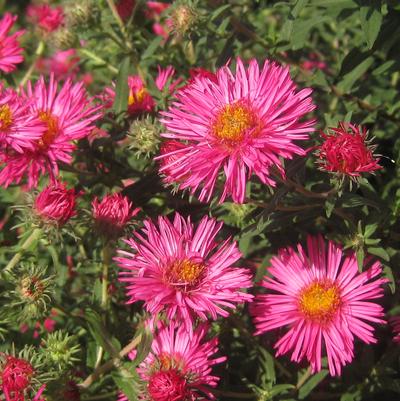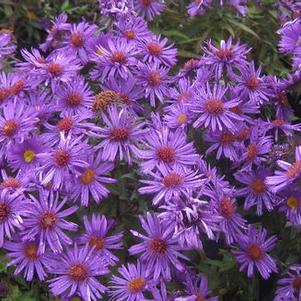Beckoning the Butterflies
Happy Labor Day Weekend everyone! It’s hard to believe that we made it through summer so quickly, but here we are. While we get ready for what is sure to be an incredibly hectic fall season, the Nursery is aflutter with butterflies of all sorts. This week, we’re going to touch on some ol’ timeless classics that can be found flitting about this time of year, including everyone’s favorites, the Monarchs and the Swallowtails. We’ll also dive into perhaps a slightly lesser known, but incredibly common native species, the Pearl Crescent butterfly. Let’s ogle some pictures and learn some fun butterfly facts, shall we?
Monarch butterfly – Danaus plexippus
Perhaps the most well-known butterfly in the Western Hemisphere, naturally the Monarch had to come first. They’re not just called Monarchs for no reason, after all. No matter how many hundreds of times you’ve seen them, they’re easily one of the most welcomed and delightful spectacles of the summer landscape. Right now, they’re gearing up for their tedious migration to Mexico, where they’ll spend the winter vacationing. Monarchs will reproduce three to five generations prior to their return to the South, with the final generation migrating to Mexico without ever having been there. Call it generational memory, luck, an internal biological rhythm, or an earthly magnetism that directs them, it’s pretty incredible that novice Monarchs so easily make this trip for their first (and last) time. Our Monarch butterflies here in the Mid-Atlantic travel along the East Coast (basically the I-95 corridor), typically pausing around Delmarva and Florida safe havens prior to their final descent to Mexico. On a smaller scale, our Pleasant Run Monarch butterflies are frantically laying eggs on our milkweed, and their caterpillars of all sizes are adorably munching away on the foliage and stems. We should be mad, but they’re just so dang cute. We offer lots of Monarch-friendly plants, from larval hosts to nectar sources. In fact, the Xerxes Society is requesting your help with observing the dietary habits of Monarch butterflies, so that they’re able to determine just what exactly they’re favorite nectar source is. Listed below are some of our available native perennial options to attract Monarchs to the garden:
Larval Food Sources:
Asclepias tuberosa
Asclepias incarnata
Asclepias verticillata
Asclepias speciosa
Nectar Sources:
Monarda fistulosa
Conoclinium (Eupatorium) coelestinum
Pycnanthemum tenuifolium
Symphyotrichum (Aster) novae-angliae
Vernonia novaboracensis
Monarda punctata
Solidago caesia
Rudbeckia hirta
Swallowtails – Papilio sp.
Next up on the wildly-recognizable-butterfly roster, we have the Swallowtail butterflies. These fellers have been actively visiting Phlox paniculata ‘Jeana’ around the Nursery – it appears to be a favorite of this genus, and due to its pollinator activity and garden performance, ‘Jeana’ garden phlox was recently announced as the 2024 Perennial of the Year by the Perennial Plant Association. It’s not hard to see why. Regardless, we’ve found Swallowtails of all sorts visiting a variety of plants around here lately, but we’ll leave the visual evidence for you while we chat about these colorful friends.
-Eastern Tiger Swallowtail – Papilio glaucus
The posterchild for Swallowtail butterflies and the Official State Butterfly of Alabama, Delaware, Georgia and South Carolina, the male Eastern Tiger Swallowtail and his pale-yellow wings with blue and orange embellishments along the bottom wing margin are one of North Americas most prized butterfly species for their stunning appearance and presence in the garden. Unlike the Monarch, Eastern Tiger Swallowtails only typically produce two generations in the Northern states, although their host plants are much more varied and typically involve woody specimens such as Liriodendron tulipifera, Magnolia virginiana, Syringa vulgaris, Prunus serotina, and Salix spp. They are known to delight in a variety of nectar sources as well, from Echinacea spp., to Vernonia spp., Phlox spp., Asclepias spp. and Eutrochium spp., to name a few.
-Spicebush Swallowtail – Papilio Troilus
Meanwhile, the host-specific Spicebush Swallowtail butterfly, while also enjoying various nectar sources, requires Lauraceae (Laurel Family) woodies in order to complete its life cycle. In the Eastern United States, these most commonly include Sassafras albidum and Lindera benzoin. While somewhat visually similar to Black Swallowtail butterflies (which we’ll get to in a moment), there are two key differences to look out for when trying to identify who you’re looking at. Spicebush Swallowtails are lacking an orange spot on the underside of their hind wings, and also display a blue-green “swosh” that usually helps to distinguish the species.
-Parsley Caterpillar/Black Swallowtail
Typically, when most people think of Swallowtail butterflies, they are immediately inundated with flashbacks of fleshy little grubs completely skeletonizing their parsley or cilantro. Although parsley caterpillars, also called parsleyworms and better known as Black Swallowtail butterflies in their adult stage, require Apiaceae (Carrot family) members to successfully make it through their larval period, fear not that you’re forever doomed to lose your herbs and carrot greens to these voracious feeders. A fantastic native option for satiating these hungry little guys is Zizia aurea, a lovely perennial that creates a wonderful Spring display of flat-topped yellow flower clusters. Luckily for you, Zizia spp. (both Z. aurea and Z. aptera) are pretty fast growers, and are capable of forming dense little colonies wherever they are happiest. Because they belong to the carrot family, Zizia aurea doubles as not only a great addition to a variety of site conditions but also as a culinary distraction for hungry parsley caterpillars.
Pearl Crescent butterfly – Phyciodes tharos
Last on our list of butterflies this week is a little known but very common and easily seen species, the Pearl Crescent butterfly. Quick-flighted, spritely, and curious, the Pearl Crescent butterfly is a North American native that is often easily confused for other Crescent butterflies, namely the Northern and Tawny Crescents. Pearl Crescent butterflies feature a variety of colors and patterns on their small wings, although orange, umbers, brownish-blacks and blackish-browns are staple colors that help to identify these critters. Females tend to be more heavily patterned, and often have more blackish tones in their wings. Currently, our Pearl Crescents are in their third and final brood for the year, undergoing two to three reproductive cycles annually depending on their locale; here, in New Jersey, three broods are common, with the third taking flight between August and November, and their caterpillars overwintering as instars. Asters are a major larval host for Pearl Crescent caterpillars, although the adults are more generalized feeders and tend not to discriminate against nectar sources. Despite being one of the most prolific butterfly species in the United States, their caterpillars are rarely seen on the New England Aster due to their incredible hide-and-seek abilities. The caterpillars construct a web-like nest around their feeding area, although they do not spin silk. You’d think they’d be easier to find in this state, but, alas. We’ll just have to make do with their abundant and rather social adult forms. Keep an eye out for them as you visit the Nursery over the next few months, and you never know – you may just find a Pearl Crescent caterpillar on our Asters if you look hard enough! Below are some of our available Pearl Crescent-friendly Asters for happy caterpillars.
Larval Host Plants:
Symphyotrichum (Aster) laeve ‘Bluebird’
Symphyotriochum (Aster) ericoides ‘Bridal Veil’
Symphyotriochum (Aster) ericoides ‘Snow Flurry’
Symphyotrichum (Aster) novae-angliae
Symphyotrichum (Aster) novae-angliae ‘Purple Dome’
Symphyotrichum (Aster) novae-angliae ‘Vibrant Dome’
Symphyotrichum (Aster) novae-angliae ‘Alma Potschke’
Monarch Butterfly | National Wildlife Federation (nwf.org)
Monarch Butterfly Migration and Overwintering (usda.gov)
16-042_01_XercesSoc_MonarchNectarPlants_Mid-Atlantic_web-3page_0.pdf
XERXES SOCIETY FOR TRACKING NECTAR SOURCES Monarch Nectar Plant Observations (arcgis.com)
Swallowtail | Butterfly Conservation (butterfly-conservation.org)
Eastern Tiger Swallowtail (usda.gov)
Tiger Swallowtail Butterfly: Identification, Facts & Pictures (butterflyidentification.com)
Larval and nectar plants for the tiger swallowtail. - UF/IFAS Extension Nassau County (ufl.edu)
Parsleyworm \ Eastern Black Swallowtail | NC State Extension Publications (ncsu.edu)
Pearl Crescent - Alabama Butterfly Atlas (usf.edu)
Host and Nectar Plants - Alabama Butterfly Atlas (usf.edu)
Pearl Crescent (Family Nymphalidae) – Field Station (uwm.edu)
Pearl Crescent — wisconsinbutterflies.org















